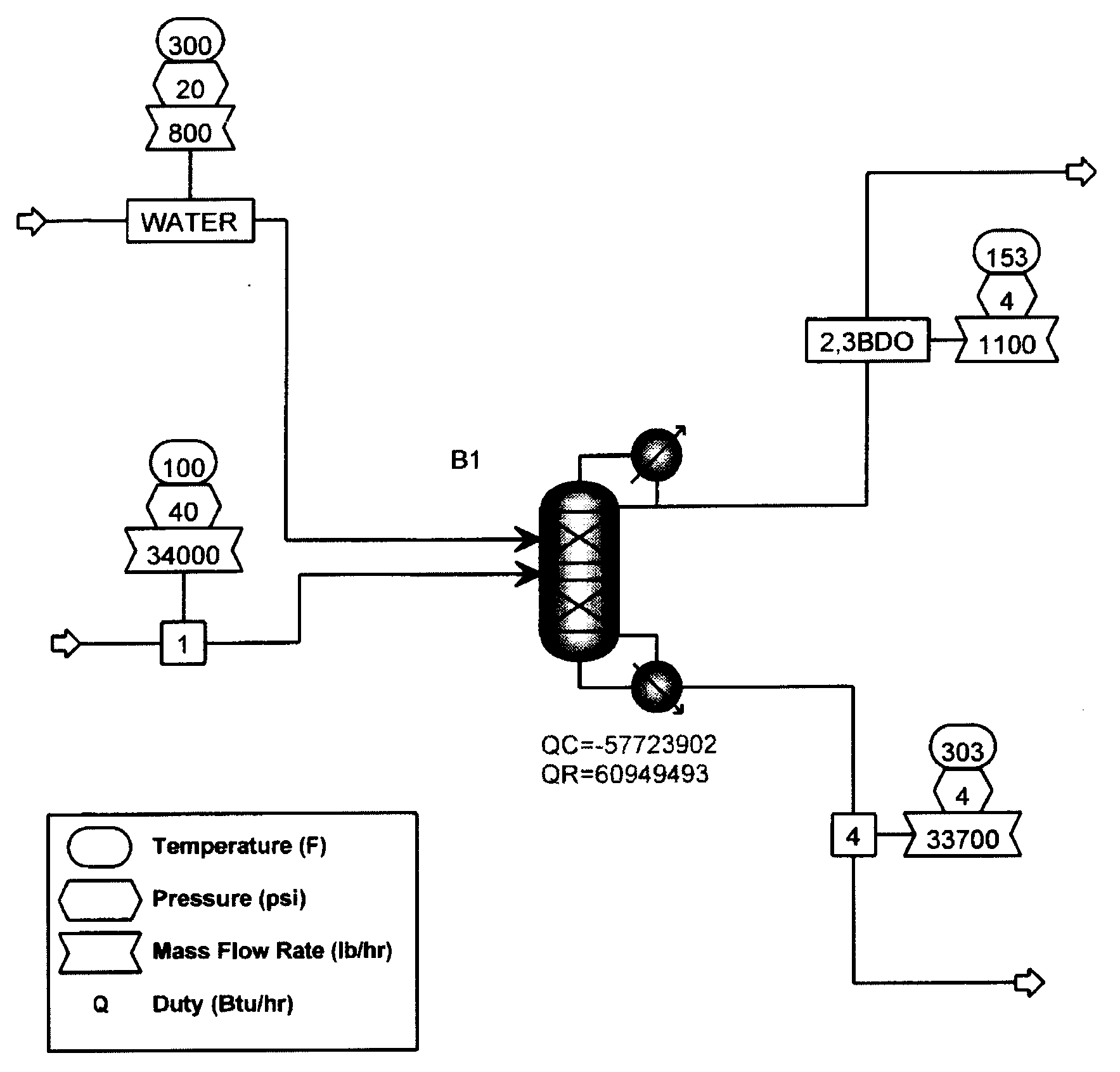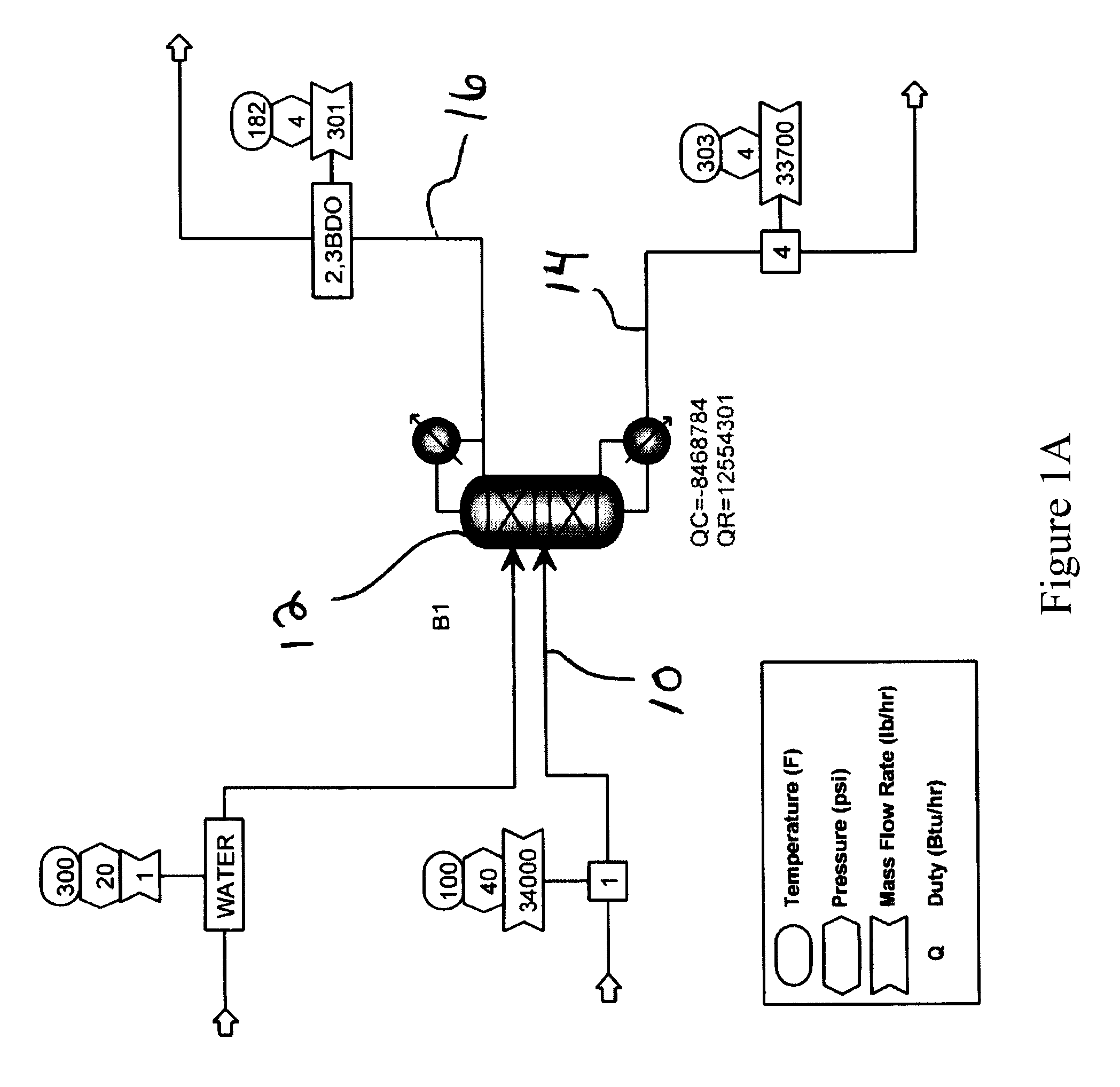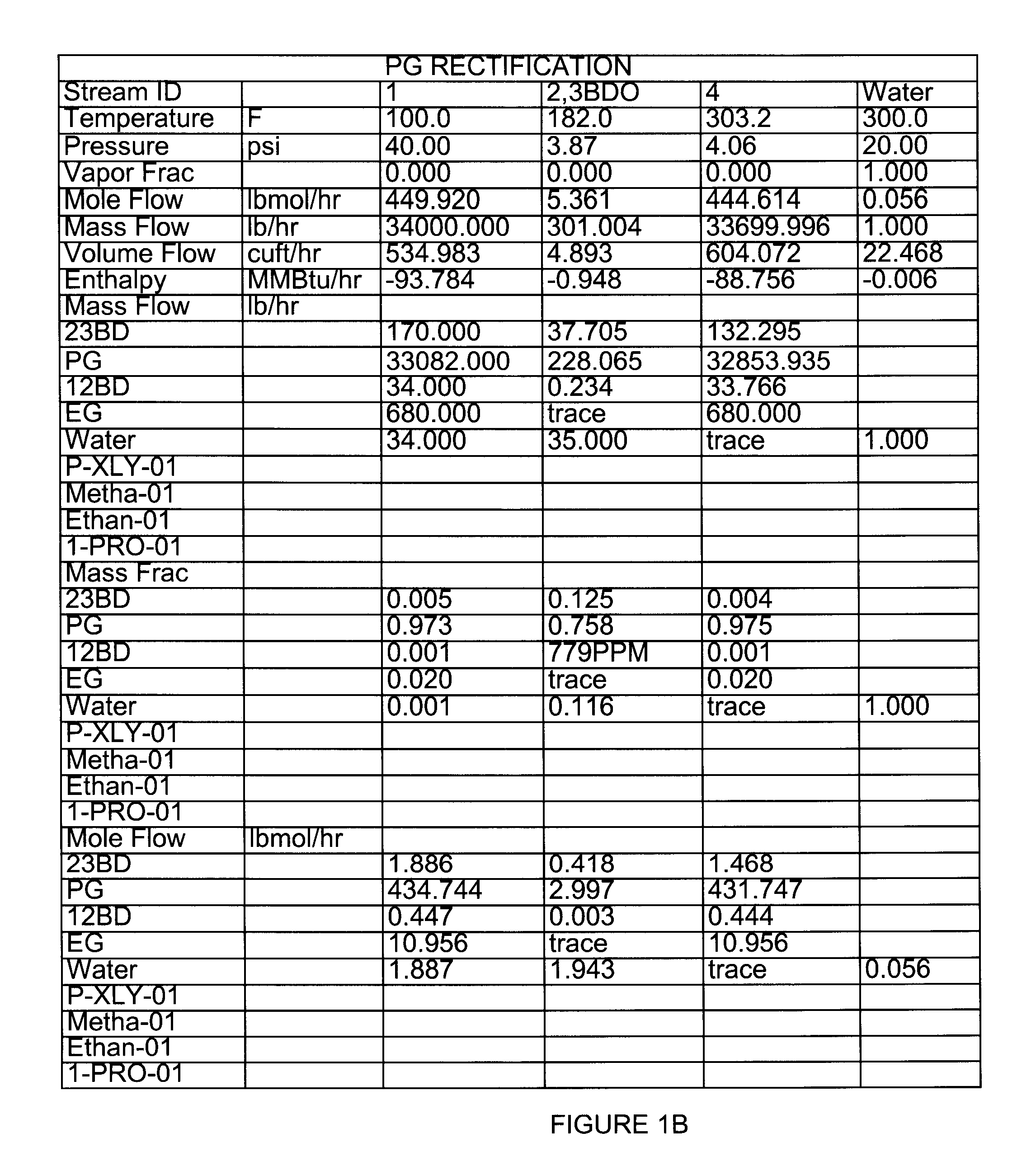Processes for isolating or purifying propylene glycol, ethylene glycol and products produced therefrom
a technology of ethylene glycol and isolating or purifying propylene glycol, which is applied in the direction of oxygen compound purification/separation, separation process, detergent compounding agent, etc., can solve the problems of increasing demand for petrochemical derived products, and increasing the cost of petroleum products
- Summary
- Abstract
- Description
- Claims
- Application Information
AI Technical Summary
Problems solved by technology
Method used
Image
Examples
example 1
[0045]A series of studies were conducted in a 2000 ml high-pressure Stainless Steel 316 reactor. A solid catalyst similar to the “G” catalyst disclosed in U.S. Pat. No. 6,479,713 or the “HC-1” catalyst available from Sud Chemie (Louisville, Ky.) was loaded in the reactor to a final volume of 1000 ml of catalyst. The reactor was jacketed with a hot oil bath to provide for the elevated temperature for reactions and the feed and hydrogen lines were also preheated to the reactor temperature. A solution of a bio-based, substantially pure, 40% USP grade glycerol was fed through the catalyst bed at LHSV ranging from 0.5 hr−1 to 2.5 hr−1. Hydrogen was supplied at 1200-1600 psi and was also re-circulated through the reactor at a hydrogen to glycerol feed molar ratio of 5:1. In other embodiments, the hydrogen to glycerol feed molar ratio may be between 1:1 to 10:1. Tables 5A and 5B in FIGS. 2A and 2B describe the results with hydrogenolysis of 40% USP grade glycerol feed. Between 47.7-96.4% o...
example 2
[0047]Extractive distillation of a feed mixture of propylene glycol, ethylene glycol, 1,2-butanediol, 2,3-butanediol and trace amounts of water to be distilled in a stainless steel structured packed column under reflux conditions was simulated using ASPEN Plus™ software version 12.0, available from Aspen Technologies, Inc. (Cambridge, Mass.). In these Examples, the components and amounts of the feed mixture that were used are representative of a product produced that may be produced by the hydrogenolysis process of Example 1. However, it will be apparent by those of ordinary skill in the art that the processes and conditions described herein may be varied and optimized depending on the feed stock used. As shown in FIG. 1, overheads were predicted to contain 0.758 mole fraction of propylene glycol and 0.125 mole fraction of 2,3-Butanediol. A loss of propylene glycol in the overhead fraction with 2,3-butanediol was predicted by the model.
[0048]FIG. 1 also illustrates one embodiment of...
example 3
[0049]Extractive distillation of a feed mixture of propylene glycol, ethylene glycol, 1,2-Butanediol, 2,3-Butanediol and trace amounts of water mixed with the polar solvent, water, to form a solution containing approximately 10% water to be distilled in a stainless steel structured packed column under reflux conditions was simulated substantially the same as described in example 2. As shown in FIG. 2, overheads were predicted to contain 0.092 mole fraction of propylene glycol and 0.15 mole fraction of 2,3-Butanediol. Addition of the polar solvent (i.e., water) was expected to reduce the overhead loss of propylene glycol from 0.758 mole fraction (example 2) to 0.092 mole fraction. The still pot bottoms (undistilled residue) were predicted to contain propylene glycol, 1,2-butanediol and ethylene glycol recovered with trace amounts of water, and 2,3-butanediol. FIG. 8 shows the lack of an azeotrope between water and 2,3-butanediol.
PUM
| Property | Measurement | Unit |
|---|---|---|
| weight percent | aaaaa | aaaaa |
| pressure | aaaaa | aaaaa |
| temperature | aaaaa | aaaaa |
Abstract
Description
Claims
Application Information
 Login to View More
Login to View More - R&D
- Intellectual Property
- Life Sciences
- Materials
- Tech Scout
- Unparalleled Data Quality
- Higher Quality Content
- 60% Fewer Hallucinations
Browse by: Latest US Patents, China's latest patents, Technical Efficacy Thesaurus, Application Domain, Technology Topic, Popular Technical Reports.
© 2025 PatSnap. All rights reserved.Legal|Privacy policy|Modern Slavery Act Transparency Statement|Sitemap|About US| Contact US: help@patsnap.com



